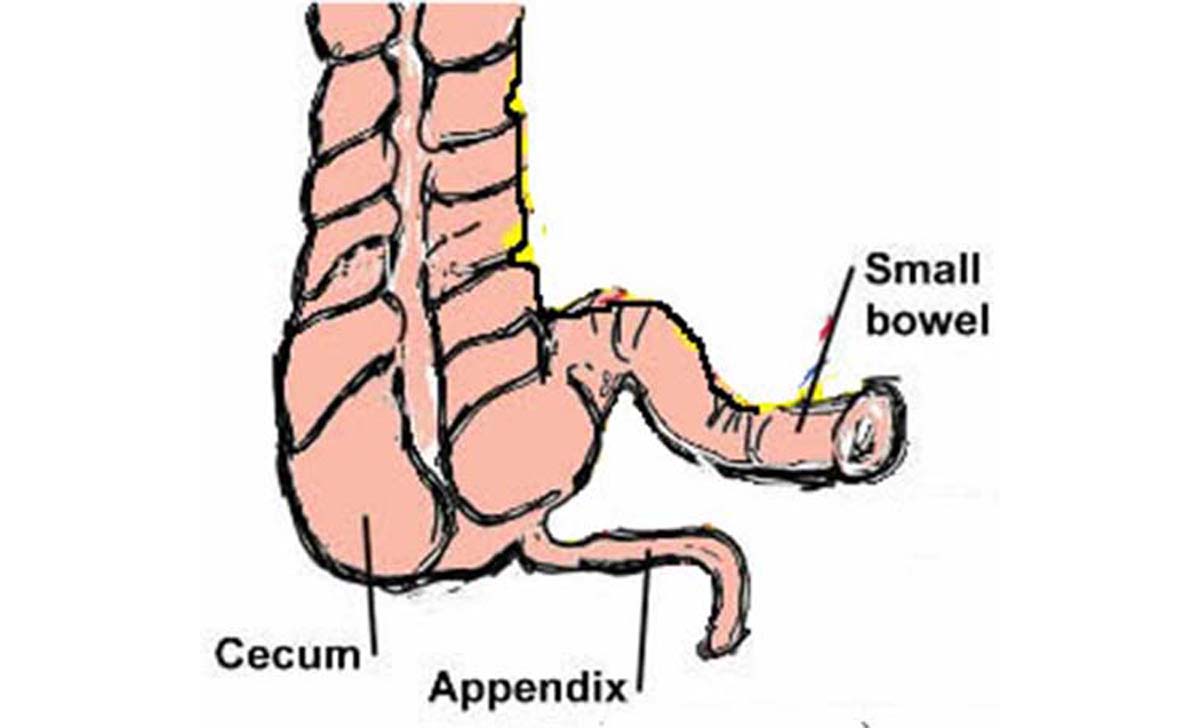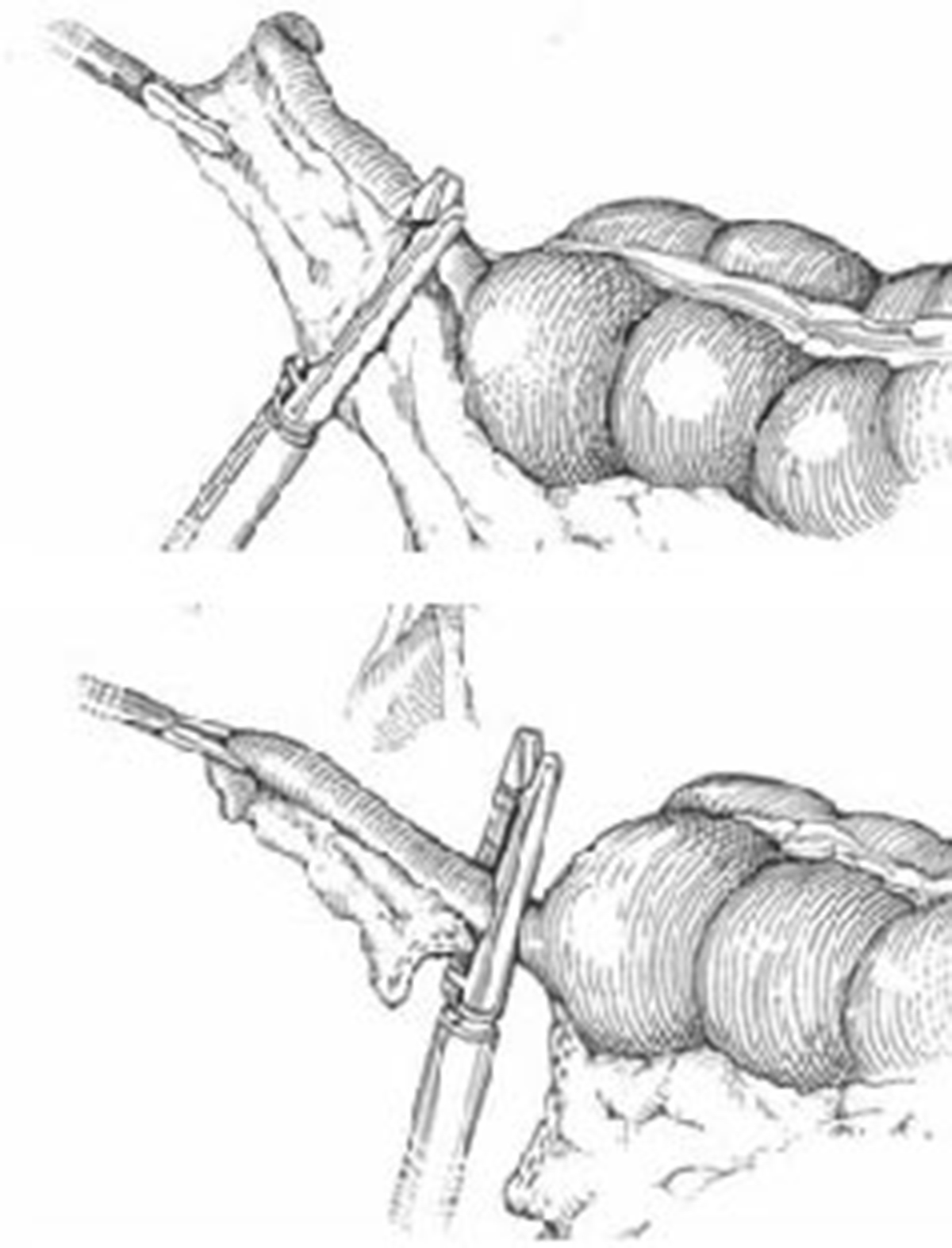 Appendix and its function
Appendix and its function

The appendix is a narrow, finger-like tube that is attached to the first part of the colon, the cecum. For a long time, the real purpose of this small, worm-like organ wasn’t completely understood.
Several studies showed that this small structure has many functions. Its primary role is participation in the immune system. The wall of the appendix contains lymphatic tissue that makes antibodies. It has a similar histological structure to the rest of the colon and also contains a small layer of muscles. It produces a small amount of mucus that flows through the appendix and into the cecum. [1]
Inflammation of the appendix
Inflammation of the appendix is called appendicitis and it is believed that the real cause behind it is a blockade of the appendix' opening to the colon. Acute appendicitis is one of the most common causes of abdominal pain in childhood.
- It can be caused by stool that somehow got trapped, or by a mucus build-up.
- Another possible scenario is that during an infection the lymphatic tissue of the appendix swells-up and causes a blockage. Bacteria that are commonly present in a healthy colon may pass through some small erosion of the mucus membrane and spread to the tissue around appendix, causing inflammation. In these cases, the appendix can even rupture and inflammation can spread to the whole abdomen. This condition occurs most commonly in young people, between childhood and adolescence. [2]
- Inflammatory bowel disease (IBD), which includes Crohn's disease and ulcerative colitis, long-lasting disorders that cause irritation and ulcers in the GI tract.
- Trauma to the abdomen.
Sometimes, when the infection is mild, a body can fight appendicitis without any surgical treatment. With time, all the symptoms, including pain, simply disappear.
Symptoms of appendicitis
The main, and in most cases, the only symptom of appendicitis is a strong abdominal pain. [3] Besides pain, nausea and vomiting accompanied by fever and reduced appetite can also occur in appendicitis. Diarrhea is also a common symptom.
In the beginning, it is very difficult to localize the pain and tell where it is coming from because the appendix is positioned deep in the abdomen. Most patients describe it as a radiating pain in the central part of their abdomen. However, when the inflammation spreads to the peritoneum, a thin membrane that covers the intestines, pain is clearly localized to a small area in the lower right part of the abdominal wall. It is on the line that connects the right hip bone and the belly and it is called McBurney's point.
Complications of appendicitis
The infected appendix can be surgically removed during an operation called appendectomy, because an untreated inflammed appendix can lead to serious complications. There are several complications of appendicitis which can occur in the first stages of the disease, but they mostly occur if the condition is left untreated.
The most common complication of this condition is a perforation. Perforation can lead to a much more serious condition called peritonitis — an infection of the entire lining of the abdomen, which can be lethal. [4]
There are also some less common complications such as blockage of the intestine. This isn’t really a blockage; the inflammation causes intestinal muscle failure, and this prevents the intestinal contents from passing. [5]
Sepsis – blood poisoning in which bacteria enter the bloodstream may also occur and is an urgent condition too but luckily, this occurs very rarely.
Diagnosis
Before the operation, your doctor should first perform several tests to make the right diagnosis.
- The examination must include a careful abdominal and rectal examination of the patient in which the localization of pain should be verified. A doctor will perform a physical exam to assess your pain. Your doctor may apply gentle pressure on the painful area.
There are also several other tests that should be done in order to make the right diagnosis [6]:
- A white blood cells count – In case of an infection, your white blood cell count is elevated in 70 to 90% of cases. One problem with this test is that an elevated white blood cell count doesn’t have to be caused by appendicitis. Almost all other conditions that include even the mildest inflammation will lead to similar test results. The test is neither specific nor sensitive enough to rule out a diagnosis of appendicitis.
- Urine analysis – During an attack of acute appendicitis, urine tests are usually quite normal which can also be a very important diagnostic sign. Changes and abnormal urine tests suggest that there is a kidney or bladder problem.
- Abdominal X-ray - An abdominal X-ray should show the presence of an appendix stone called a fecalith in the right lower area of the abdomen which blocks the opening of the appendix. A type of X-ray called Barium enema could also be helpful. During this procedure, the colon is filled with liquid barium. This makes the X-ray visualization much better.
- Ultrasound - Ultrasound can identify an enlarged appendix or an abscess but not in all cases. It can be very helpful when the patients are females because it can rule out some other conditions such as inflammation of the ovaries, fallopian tubes and uterus.
- CT-scan - Computed tomography scans play an important role in the diagnosis of appendicitis. CT may show an enlarged, swollen appendix but not in all cases.
Difficulties with the diagnosis
Sometimes, it can be very difficult to diagnose appendicitis because the position of the appendix in the abdomen may vary significantly.
The appendix may also be much longer than usual and sometimes it is small and hidden behind the cecum. The combination of a large sheet that covers the appendix and extremely long appendix allows the structure to even go deep down into the pelvis which makes the diagnosis almost impossible. Several other inflammatory conditions may easily mimic appendicitis such as [7]:
- Meckel's diverticulitis - inflammation of a small finger-like structure attached to the small intestine.
- Pelvic inflammatory disease - Inflammation of almost all female genital structures including tubes and ovaries.
- Inflammatory diseases of the right upper abdomen such as duodenal ulcer, gallbladder disease, or inflammatory diseases of the liver.
- Kidney diseases - The right kidney is close enough to the appendix but is localized deeper. Inflammatory problems in the kidney can successfully mimic appendicitis.
Appendectomy
This procedure is normally performed in cases of emergency when the patient is suffering from acute appendicitis, which involves strong pain and fever. The entire diagnostic test should be done very quickly because the time interval between the onset of symptoms and rupture can vary, but in general appears to be about 36 to 48 hours.
There are two types of this operation:
1. Laparoscopic operation
2. Classical, open operation
Antibiotics are usually given to the patient prior to surgery and as soon as appendicitis is suspected. A child that has serious symptoms should receive intravenous fluids, antibiotics, and medication for pain relief. The surgery is done while the patient is unconscious and pain-free, using general anesthesia.

The laparoscopic operation can be performed by using three or two instruments popularly called ports. Ports are placed through the belly button, the left lower abdomen, and the right mid-abdomen. The whole operation lasts approximately the same time as the classical operation. One of these ports simply cuts out the appendix and removes it through the same hole! [8]
Many surgeons are using a new method in which the whole appendix is brought to the surface of the skin through a small incision where the port came in. The appendectomy is then performed outside of the body, on the surface of the skin! This method has many advantages such as smaller scar and the ability to completely see the other structures inside the abdomen via a small camera installed on one port!
The classical, open approach is performed through a small incision made in the right lower quadrant of the abdomen.
The incision is usually two to three inches in length. After the surgeon examines the area of inflammation, the appendix is removed. If an abscess is formed, the whole collection of pus is removed and a small tube may be left in to help drain out fluids or pus.
Possible complications of appendectomy
The most common complication is a bacterial super-infection of the wound. It is easy to diagnose bacterial infection because the wound is healing much slower. Redness and tenderness can be seen in the place of incision. In such cases, a surgeon sometimes does not close the wound. He leaves it open so he can treat it with antibiotics more easily.
Another possible complication of appendectomy is an abscess. An abscess is a collection of pus in the area of the appendix. It too can be treated with strong antibiotics and surgical excision. [9]
READ How to recognize the Signs of Acute Appendicitis?
Post-operative treatment and care
If the condition wasn’t urgent, meaning that the appendix was not ruptured at the time of the surgery, the patient is sent home from the hospital after one or two days.
Patients with a perforated appendix stay a bit longer; at least four to seven days. [10]
During the hospital stay, intravenous antibiotics are given to fight possible infections. The most important thing is that living without an appendix causes no known health problems.
- en.wikipedia.org/wiki/Appendectomy

